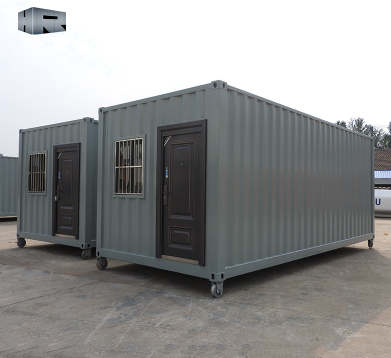
A customized shipping container can greatly improve logistical operations in several ways.
Firstly, customization allows for better utilization of available space. Standard shipping containers come in fixed dimensions, limiting their flexibility in accommodating various types of cargo. Customization enables the container to be modified according to the specific requirements of the cargo being transported. For example, if the cargo is heavy machinery, the container can be reinforced and equipped with special mounting systems to securely hold and transport the equipment. This ensures optimal utilization of space within the container, allowing for more efficient loading and unloading processes.
Secondly, customized containers can enhance cargo protection. Different types of cargo require specific handling and storage conditions to mitigate the risk of damage. By customizing the container, specific features can be added to protect the cargo during transportation. This can include insulation, ventilation systems, moisture barriers, or even temperature control mechanisms. For example, perishable goods such as food or pharmaceuticals require temperature-controlled containers to prevent spoilage. By customizing the container with insulation and refrigeration units, the cargo can be transported safely, maintaining its quality and integrity.
Furthermore, customization can improve security measures. Standard shipping containers can be susceptible to theft and unauthorized access. Customization allows for the inclusion of additional security features such as reinforced doors, tamper-proof locks, or even advanced surveillance systems. These measures enhance the security of the cargo, reducing the risk of theft or damage during transportation. This is particularly important for high-value or sensitive goods such as electronics, luxury items, or confidential documents.
Additionally, customization can facilitate the implementation of specialized handling equipment. Many logistical operations involve the use of specialized machinery to load, unload, or transport cargo. Customizing a shipping container to be compatible with specific handling equipment can streamline the overall logistics process. For example, modifying the container with built-in forklift pockets or crane attachment points enables easier and faster loading or unloading operations. This minimizes the need for additional equipment or manual labor, saving time and reducing operational costs.
Customized containers can also improve efficiency in terms of logistics planning. By incorporating specific features into the container, it becomes easier to plan and optimize the transportation process. For instance, containers can be customized with tracking systems that enable real-time monitoring of cargo location and condition. This provides valuable data for logistics managers to track inventory, plan routes, and make informed decisions regarding the timing and allocation of resources. Improved logistics planning results in optimized routes, reduced transportation costs, and better overall operational efficiency.
Moreover, customized containers can enhance branding and marketing efforts. Containers can be customized with company logos, colors, or other branding elements. This not only improves the visibility and recognition of the company during transportation but also serves as a form of mobile advertising when the container is on the road. Customized containers can be seen as a unique marketing tool, showcasing the company's identity and promoting its services to a wider audience.
In conclusion, a customized shipping container can greatly improve logistical operations by maximizing space utilization, enhancing cargo protection, improving security measures, facilitating specialized handling equipment, optimizing logistics planning, and enhancing branding efforts. The ability to tailor the container to the specific needs of the cargo being transported provides numerous benefits in terms of efficiency, cost-effectiveness, and overall operational excellence.




ความคิดเห็น
(0)